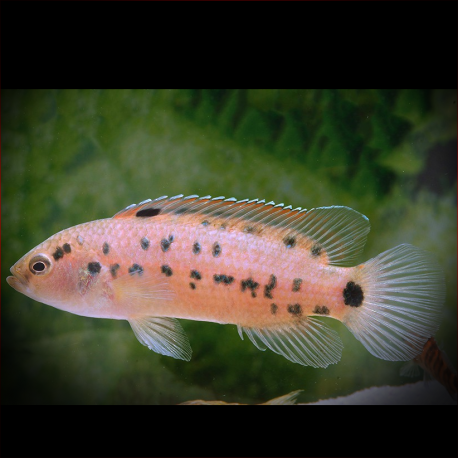More info
Datasheet
| Minimum Tank Size | 90 litres / 23.78 US gallons |
| Maximum Size | 7.5cm / 2.95inches |
| Temperature | 15°C / 59.00°F - 25°C / 77.00°F |
| Hardness | 3.03dgH / 54ppm - 10.03dgH / 179ppm |
| pH | 6.0-7.5 |
General Description
The Badis Assamensis, a member of the Badidae family under the Perciformes order, is a poorly documented species. It is distinguished by its slightly larger size, shorter jaw profile, and unique internal meristic characteristics compared to the B. blosyrus. The genus Badis underwent extensive revision in 2002, resulting in the identification of multiple new species in addition to the creation of the Dario genus. Badis species now total fifteen, with several awaiting formal description. The fish exhibit various distinguishing features, such as dark cleithral spots, vertical barring, and distinct patterning along their flanks.
Aquarium Setup
For optimal care of the Badis Assamensis, a tank of at least 90 litres is recommended, with a well-structured setup including sand or gravel substrate, water-worn rocks and pebbles for cover, and optional plant species. Decorative additions like driftwood, branches, floating plants, and leaf litter can enhance the habitat. Filtration and lighting should be moderate, with the inclusion of cave-like structures for spawning sites, such as half-coconut shells or clay plant pots with access holes.
Behaviour
The Badis Assamensis is best kept in a community tank with peaceful tankmates, as it is slow-moving and may be outcompeted for food by more boisterous species. It displays territorial behavior, especially among rival males, making it crucial to ensure sufficient space and hiding spots for each fish. During breeding times, males can become aggressive towards females entering their territory, exhibiting vivid coloration changes and courtship behaviors, including mouth-locking.
Feeding and Diet
Being micropredators, Badis species predominantly feed on small aquatic crustaceans, worms, insect larvae, and zooplankton. They may be picky eaters initially, preferring live or frozen foods such as Artemia, Daphnia, or glassworms over dried alternatives. Avoiding chironomid larvae (bloodworm) and Tubifex is essential to prevent issues related to obesity and disease susceptibility.
Reproduction & Dimorphism
Badis Assamensis are cave spawners that form temporary pair bonds for breeding. The males take on the responsibility of caring for the eggs and fry, displaying protective behaviors and fanning the brood with their fins. Post-spawning, the female is typically ejected from the territory. Sexual dimorphism is evident, with males displaying extended finnage and brighter coloration, while females are smaller with duller patterning and a rounder body profile.
Habitat and Distribution
The distribution of the Badis Assamensis is primarily linked to the Brahmaputra River basin in Assam state, northeast India, extending potentially to northern West Bengal near the Assam border. These fish are found in slow-moving streams with stagnant, brownish water and a sandy substrate conducive to the growth of water lilies. The species can also be inhabitants of forested areas with overhanging trees along the water banks.

